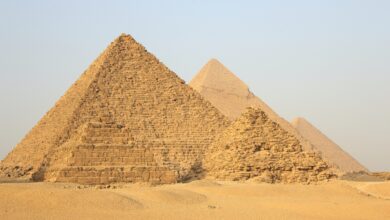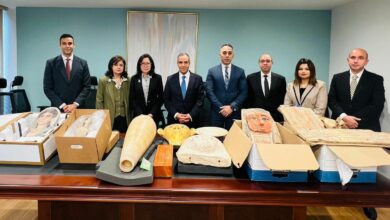
Egyptian archaeologist Zahi Hawass on Saturday highlighted several archaeological findings from the “Lost Golden City” uncovered in Luxor’s Habu.
These include tools and utensils, revealing that the ruins belonged to more than just graves.
Other findings included various pottery vessels, necklaces, knots, seals and dried fish in addition to up 10 kilograms of dried meat. Hawass noted that the city name’s comes from the fact that it was dates to the end of Egypt’s Golden Age, during the he reign of King Amenhotep III.
He added that many archaeologists doubted that this city would be found.
Hawass said that the city was a residential, administrative and industrial center filled with artisans and workers who designed jewellery and clothing, alongside a huge area built to store meat.
Scenes depicting the god Aten are prevalent within the ruins, with the western wing of the city containing information about King Tutankhamun, who came from Tel al-Amarna after the death of his father Akhenaten and ruled for ten years.
Hawass said that work had begun in this area in September 2020 to search for the funerary temple of Tutankhamun. The temples of Horemheb and Ay had previously been discovered in the same area.
Upon discovery, much of the city was in excellent condition, with intact walls and rooms filled with various tools.
The Guardian newspaper reported on the discovery of the 3,000 year-old Lost Golden City in Luxor, describing it as the largest discovered in Egypt and the most important archaeological discoveries since the discovery of King Tutankhamun’s tomb.
The newspaper quoted archaeologist Zahi Hawass announcing the discovery of the city, which was buried under the sand and dates back to the era of Amenhotep III and was also used by Tutankhamun.
Pieces of jewelry such as rings were found, along with colored pottery vessels, scarab amulets, and mud bricks bearing the seals of Amenhotep III. Hawass said that many foreign expeditions searched for this city and never found it.
The Guardian said that Amenhotep III inherited an empire stretching from the Euphrates to Sudan, according to what archaeologists say.



